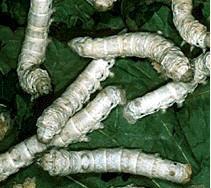

Mulberry leaves
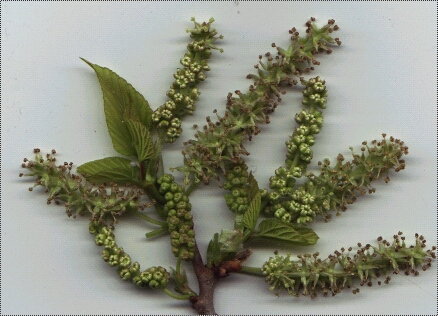 Silkworms only eat fresh mulberry leaves (or
artificial food). Mulberries are deciduous and only have leaves in the late spring, summer
and early autumn. In California, trees lose their leaves in October and
form green pollen bodies (see picture at left) in late March. Watch your local tree. It will have
only pollen bodies for a week or
so, then the leaves will start to bud in early April. Take your eggs out of the
refrigerator when there are a fair number of good-sized leaves on the tree, or your worms
will starve. However, if you wait too long, your moths will not emerge until after
school is over.
Silkworms only eat fresh mulberry leaves (or
artificial food). Mulberries are deciduous and only have leaves in the late spring, summer
and early autumn. In California, trees lose their leaves in October and
form green pollen bodies (see picture at left) in late March. Watch your local tree. It will have
only pollen bodies for a week or
so, then the leaves will start to bud in early April. Take your eggs out of the
refrigerator when there are a fair number of good-sized leaves on the tree, or your worms
will starve. However, if you wait too long, your moths will not emerge until after
school is over.
You will need to locate local mulberry trees (Latin name Morus alba). Make sure to get permission from the owners and verify that they don't spray their tree with insecticide. If possible, just pick leaves (don't break off branches), so leaves will grow back faster. Leaves will keep fresh in Ziplock bags in the refrigerator for about 5 days. Please don't strip a tree. If an owner will allow you to break off a small branch, put it in a vase of water and pick leaves as necessary. A branch will last a week this way. Don't put caterpillars on a branch in water, since they will crawl down to the water and drown.
If you're having trouble figuring out what a mulberry tree looks like, consult your local nursery or look at the photos in the Silkworm book listed under Teacher Resources . A more detailed version of the picture of mulberry leaves is available here. If you cannot locate a white mulberry (morus alba), you can use a fruiting mulberry tree instead. Artificial silkworm food is sold by http://www.mulberryfarms.com in reasonable quantities. It comes as a powder to which you add water. It works well with certain varieties of silkworm - but they will get bigger faster if they eat leaves.
You might be tempted to place the silkworms on a mulberry tree to save the trouble of picking leaves. DON'T! Birds love to snack on silkworms and might devour your whole crop in moments.
Once you have located a source of leaves, you will need a container
in which to grow silkworms. To continue to that page, click here.
You can find a tremendous amount of information about mulberry trees at http://newcrop.hort.purdue.edu/newcrop/duke_energy/Morus_alba.html
More photos of trees to help with identification at
http://www.kulak.ac.be/facult/wet/biologie/pb/kulakbiocampus/images/buiten-kulak/bomen-heesters/Morus%20alba%20-%20Witte%20moerbei/
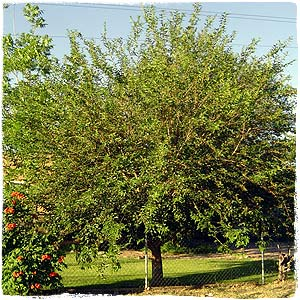
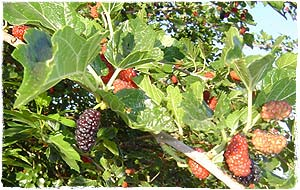
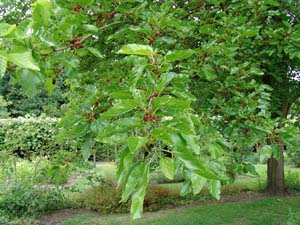
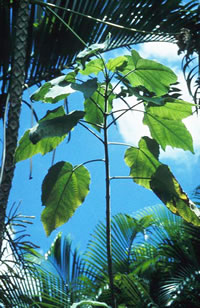
[Add this page to the Navigation view to display hyperlinks here][Add this page to the Navigation view to display hyperlinks here]